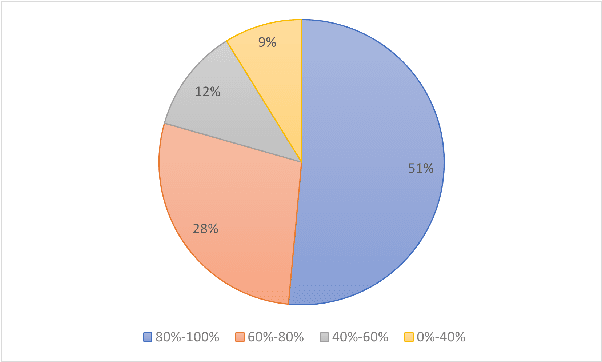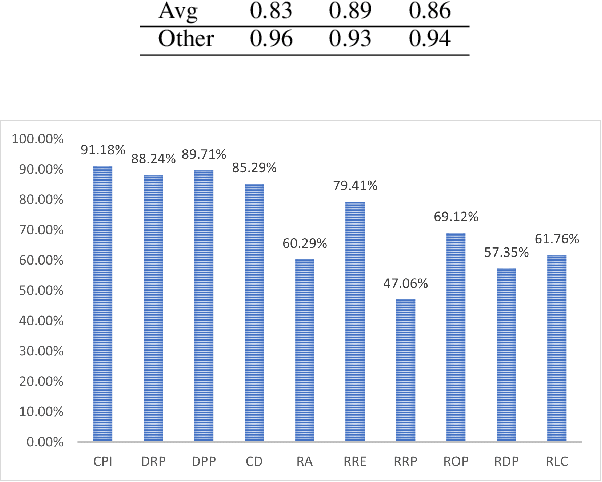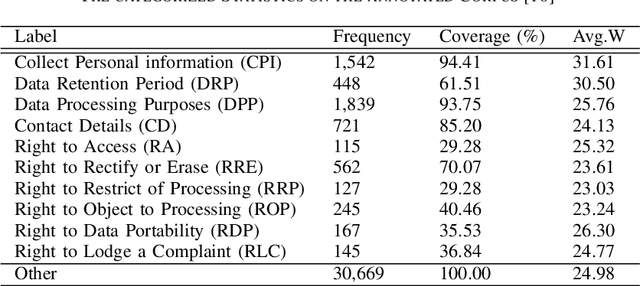Carsten Maple
Private Federated Multiclass Post-hoc Calibration
Oct 02, 2025Abstract:Calibrating machine learning models so that predicted probabilities better reflect the true outcome frequencies is crucial for reliable decision-making across many applications. In Federated Learning (FL), the goal is to train a global model on data which is distributed across multiple clients and cannot be centralized due to privacy concerns. FL is applied in key areas such as healthcare and finance where calibration is strongly required, yet federated private calibration has been largely overlooked. This work introduces the integration of post-hoc model calibration techniques within FL. Specifically, we transfer traditional centralized calibration methods such as histogram binning and temperature scaling into federated environments and define new methods to operate them under strong client heterogeneity. We study (1) a federated setting and (2) a user-level Differential Privacy (DP) setting and demonstrate how both federation and DP impacts calibration accuracy. We propose strategies to mitigate degradation commonly observed under heterogeneity and our findings highlight that our federated temperature scaling works best for DP-FL whereas our weighted binning approach is best when DP is not required.
Individualised Counterfactual Examples Using Conformal Prediction Intervals
May 28, 2025



Abstract:Counterfactual explanations for black-box models aim to pr ovide insight into an algorithmic decision to its recipient. For a binary classification problem an individual counterfactual details which features might be changed for the model to infer the opposite class. High-dimensional feature spaces that are typical of machine learning classification models admit many possible counterfactual examples to a decision, and so it is important to identify additional criteria to select the most useful counterfactuals. In this paper, we explore the idea that the counterfactuals should be maximally informative when considering the knowledge of a specific individual about the underlying classifier. To quantify this information gain we explicitly model the knowledge of the individual, and assess the uncertainty of predictions which the individual makes by the width of a conformal prediction interval. Regions of feature space where the prediction interval is wide correspond to areas where the confidence in decision making is low, and an additional counterfactual example might be more informative to an individual. To explore and evaluate our individualised conformal prediction interval counterfactuals (CPICFs), first we present a synthetic data set on a hypercube which allows us to fully visualise the decision boundary, conformal intervals via three different methods, and resultant CPICFs. Second, in this synthetic data set we explore the impact of a single CPICF on the knowledge of an individual locally around the original query. Finally, in both our synthetic data set and a complex real world dataset with a combination of continuous and discrete variables, we measure the utility of these counterfactuals via data augmentation, testing the performance on a held out set.
Justified Evidence Collection for Argument-based AI Fairness Assurance
May 12, 2025Abstract:It is well recognised that ensuring fair AI systems is a complex sociotechnical challenge, which requires careful deliberation and continuous oversight across all stages of a system's lifecycle, from defining requirements to model deployment and deprovisioning. Dynamic argument-based assurance cases, which present structured arguments supported by evidence, have emerged as a systematic approach to evaluating and mitigating safety risks and hazards in AI-enabled system development and have also been extended to deal with broader normative goals such as fairness and explainability. This paper introduces a systems-engineering-driven framework, supported by software tooling, to operationalise a dynamic approach to argument-based assurance in two stages. In the first stage, during the requirements planning phase, a multi-disciplinary and multi-stakeholder team define goals and claims to be established (and evidenced) by conducting a comprehensive fairness governance process. In the second stage, a continuous monitoring interface gathers evidence from existing artefacts (e.g. metrics from automated tests), such as model, data, and use case documentation, to support these arguments dynamically. The framework's effectiveness is demonstrated through an illustrative case study in finance, with a focus on supporting fairness-related arguments.
Representation Engineering for Large-Language Models: Survey and Research Challenges
Feb 24, 2025Abstract:Large-language models are capable of completing a variety of tasks, but remain unpredictable and intractable. Representation engineering seeks to resolve this problem through a new approach utilizing samples of contrasting inputs to detect and edit high-level representations of concepts such as honesty, harmfulness or power-seeking. We formalize the goals and methods of representation engineering to present a cohesive picture of work in this emerging discipline. We compare it with alternative approaches, such as mechanistic interpretability, prompt-engineering and fine-tuning. We outline risks such as performance decrease, compute time increases and steerability issues. We present a clear agenda for future research to build predictable, dynamic, safe and personalizable LLMs.
Distributed, communication-efficient, and differentially private estimation of KL divergence
Nov 25, 2024



Abstract:A key task in managing distributed, sensitive data is to measure the extent to which a distribution changes. Understanding this drift can effectively support a variety of federated learning and analytics tasks. However, in many practical settings sharing such information can be undesirable (e.g., for privacy concerns) or infeasible (e.g., for high communication costs). In this work, we describe novel algorithmic approaches for estimating the KL divergence of data across federated models of computation, under differential privacy. We analyze their theoretical properties and present an empirical study of their performance. We explore parameter settings that optimize the accuracy of the algorithm catering to each of the settings; these provide sub-variations that are applicable to real-world tasks, addressing different context- and application-specific trust level requirements. Our experimental results confirm that our private estimators achieve accuracy comparable to a baseline algorithm without differential privacy guarantees.
Towards Robust Federated Analytics via Differentially Private Measurements of Statistical Heterogeneity
Nov 07, 2024



Abstract:Statistical heterogeneity is a measure of how skewed the samples of a dataset are. It is a common problem in the study of differential privacy that the usage of a statistically heterogeneous dataset results in a significant loss of accuracy. In federated scenarios, statistical heterogeneity is more likely to happen, and so the above problem is even more pressing. We explore the three most promising ways to measure statistical heterogeneity and give formulae for their accuracy, while simultaneously incorporating differential privacy. We find the optimum privacy parameters via an analytic mechanism, which incorporates root finding methods. We validate the main theorems and related hypotheses experimentally, and test the robustness of the analytic mechanism to different heterogeneity levels. The analytic mechanism in a distributed setting delivers superior accuracy to all combinations involving the classic mechanism and/or the centralized setting. All measures of statistical heterogeneity do not lose significant accuracy when a heterogeneous sample is used.
AI security and cyber risk in IoT systems
Oct 11, 2024



Abstract:We present a dependency model tailored to the context of current challenges in data strategies and make recommendations for the cybersecurity community. The model can be used for cyber risk estimation and assessment and generic risk impact assessment.
A BERT-based Empirical Study of Privacy Policies' Compliance with GDPR
Jul 09, 2024



Abstract:Since its implementation in May 2018, the General Data Protection Regulation (GDPR) has prompted businesses to revisit and revise their data handling practices to ensure compliance. The privacy policy, which serves as the primary means of informing users about their privacy rights and the data practices of companies, has been significantly updated by numerous businesses post-GDPR implementation. However, many privacy policies remain packed with technical jargon, lengthy explanations, and vague descriptions of data practices and user rights. This makes it a challenging task for users and regulatory authorities to manually verify the GDPR compliance of these privacy policies. In this study, we aim to address the challenge of compliance analysis between GDPR (Article 13) and privacy policies for 5G networks. We manually collected privacy policies from almost 70 different 5G MNOs, and we utilized an automated BERT-based model for classification. We show that an encouraging 51$\%$ of companies demonstrate a strong adherence to GDPR. In addition, we present the first study that provides current empirical evidence on the readability of privacy policies for 5G network. we adopted readability analysis toolset that incorporates various established readability metrics. The findings empirically show that the readability of the majority of current privacy policies remains a significant challenge. Hence, 5G providers need to invest considerable effort into revising these documents to enhance both their utility and the overall user experience.
Representation noising effectively prevents harmful fine-tuning on LLMs
May 23, 2024



Abstract:Releasing open-source large language models (LLMs) presents a dual-use risk since bad actors can easily fine-tune these models for harmful purposes. Even without the open release of weights, weight stealing and fine-tuning APIs make closed models vulnerable to harmful fine-tuning attacks (HFAs). While safety measures like preventing jailbreaks and improving safety guardrails are important, such measures can easily be reversed through fine-tuning. In this work, we propose Representation Noising (RepNoise), a defence mechanism that is effective even when attackers have access to the weights and the defender no longer has any control. RepNoise works by removing information about harmful representations such that it is difficult to recover them during fine-tuning. Importantly, our defence is also able to generalize across different subsets of harm that have not been seen during the defence process. Our method does not degrade the general capability of LLMs and retains the ability to train the model on harmless tasks. We provide empirical evidence that the effectiveness of our defence lies in its "depth": the degree to which information about harmful representations is removed across all layers of the LLM.
Data-Agnostic Face Image Synthesis Detection Using Bayesian CNNs
Jan 08, 2024Abstract:Face image synthesis detection is considerably gaining attention because of the potential negative impact on society that this type of synthetic data brings. In this paper, we propose a data-agnostic solution to detect the face image synthesis process. Specifically, our solution is based on an anomaly detection framework that requires only real data to learn the inference process. It is therefore data-agnostic in the sense that it requires no synthetic face images. The solution uses the posterior probability with respect to the reference data to determine if new samples are synthetic or not. Our evaluation results using different synthesizers show that our solution is very competitive against the state-of-the-art, which requires synthetic data for training.
 Add to Chrome
Add to Chrome Add to Firefox
Add to Firefox Add to Edge
Add to Edge